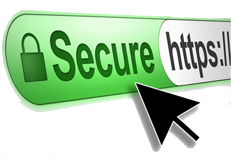
SSL is short-form for Secure Sockets Layer, a protocol developed for transmitting confidential documents via the Internet. It uses a cryptographic system with two keys to encrypt data − a public key known to all and a secret key known only to recipient of the message. All browsers support SSL, and many sites use the protocol to get confidential user information, such as credit/debit card numbers. By rule, URLs that need an SSL connection start with https: instead of http:
Both SSL and S-HTTP protocols can be viewed as complementary rather than competing technologies. Both these have been approved by the Internet Engineering Task Force as a standard. When a visitor comes to your secure portal, your web server sends a copy of your SSL certificate to his web browser. The information in the certificate will invariably include your web site’s domain name, and sometimes it also has your company’s information. This lets the browser know that the web site it is connecting to is the correct web site, and not a phishing site. This is known as authentication.
2WAY authentication also known as mutual authentication refers to two parties authenticating each other at the same time. In technical terms, it refers to a client or user authenticating themselves to a server and that server authenticating itself to the user in such a way that both parties are assured of the others’ identity.
Mutual authentication is normally used only when an extra layer of security is needed, particularly in financial transactions between organizations. We at Associates Infotech will guide you on all these aspects and help implement the same.


